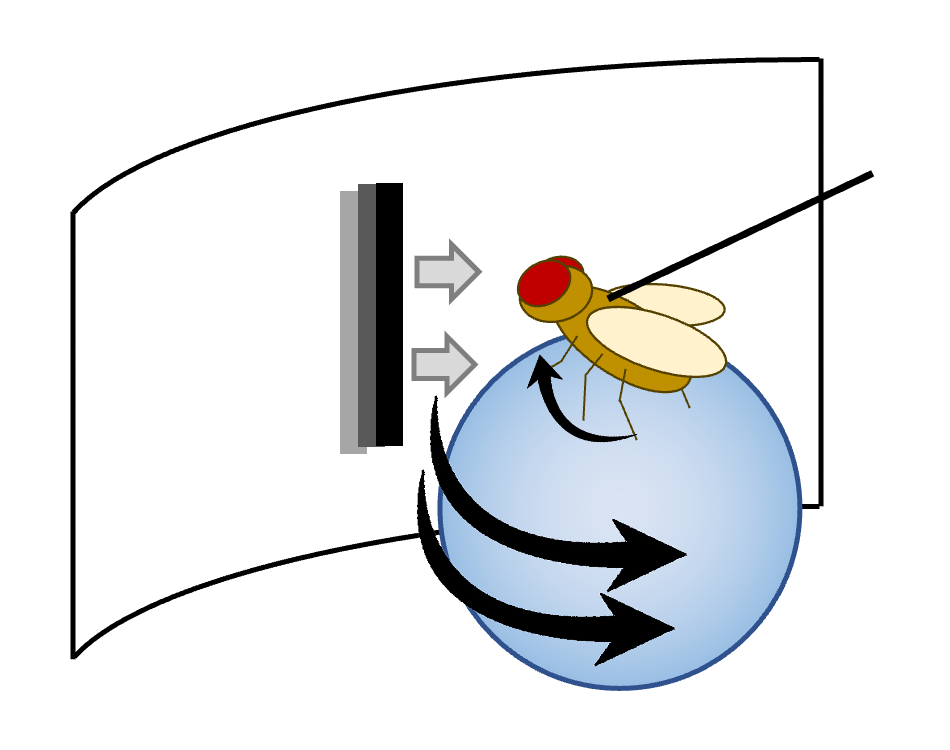Research

- A schematic of a fruit fly performing visual tasks in virtual reality. The tethered fly walks on an air-supported ball, while interacting with visual objects.
Our brains are capable of making predictions about our sensory world based on their previous experiences. This capacity guides our behaviors to be more efficient and, in some cases, is crucial for survival. To understand how a brain can make such computations, I study visual prediction in fruit flies using systems and computational neuroscience.
My past research included modeling DNA methylation as a dynamic process with important developmental consequences (Laird Lab and Stöger Lab) and studying how neuronal circuitry shapes fruit fly courtship behavior (Murthy Lab).
Publications
Carreira-Rosario A, York RA, Choi M, Doe CQ, and Clandinin TR. 2021. “Mechanosensory input during circuit formation shapes Drosophila motor behavior through patterned spontaneous network activity.” Current Biology. In Press.
Kauvar IV, Machado TA, Yuen E, Kochalka J, Choi M, Allen WE, Wetzstein G, and Deisseroth K. 2020. “Cortical observation by synchronous multifocal optical sampling reveals widespread population encoding of actions.” Neuron. 107(2): 351-367.
Stöger R, Choi M, Leeman G, Emes RD, Begum K, Melamed P, and Bently GR. 2020. “Childhood location correlates with epigenetic age and methylation stability in British-Bangladeshi migrants.” bioRxiv.
Choi M, Genereux DP, Goodson J, Al-Azzawi H, Allain SQ, Simon N, Palasek S, Ware CB, Cavanaugh C, Miller D, Johnson WC, Sinclair KD, Stöger R, and Laird CD. 2017. “Epigenetic memory via concordant DNA methylation is inversely correlated to developmental potential of mammalian cells.” PLoS Genetics. 13(11): e1007060.